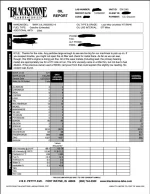It gets chewed into pieces and those pieces block the screen of the oil pickup tube causing oil starvation. Some pieces can get into the timing chain. Typical BITOG mantra of "oil is cheaper than replacing leaky gaskets." doesn't fly with this engine family.I'm confused, I'll admit I know little about that particular motor, but how is a serpentine belt failure going to put metal in the oil?
https://blog.fcpeuro.com/why-you-ca...-housing-leak-on-an-n51-n52-n54-or-n55-engine
Last edited:

